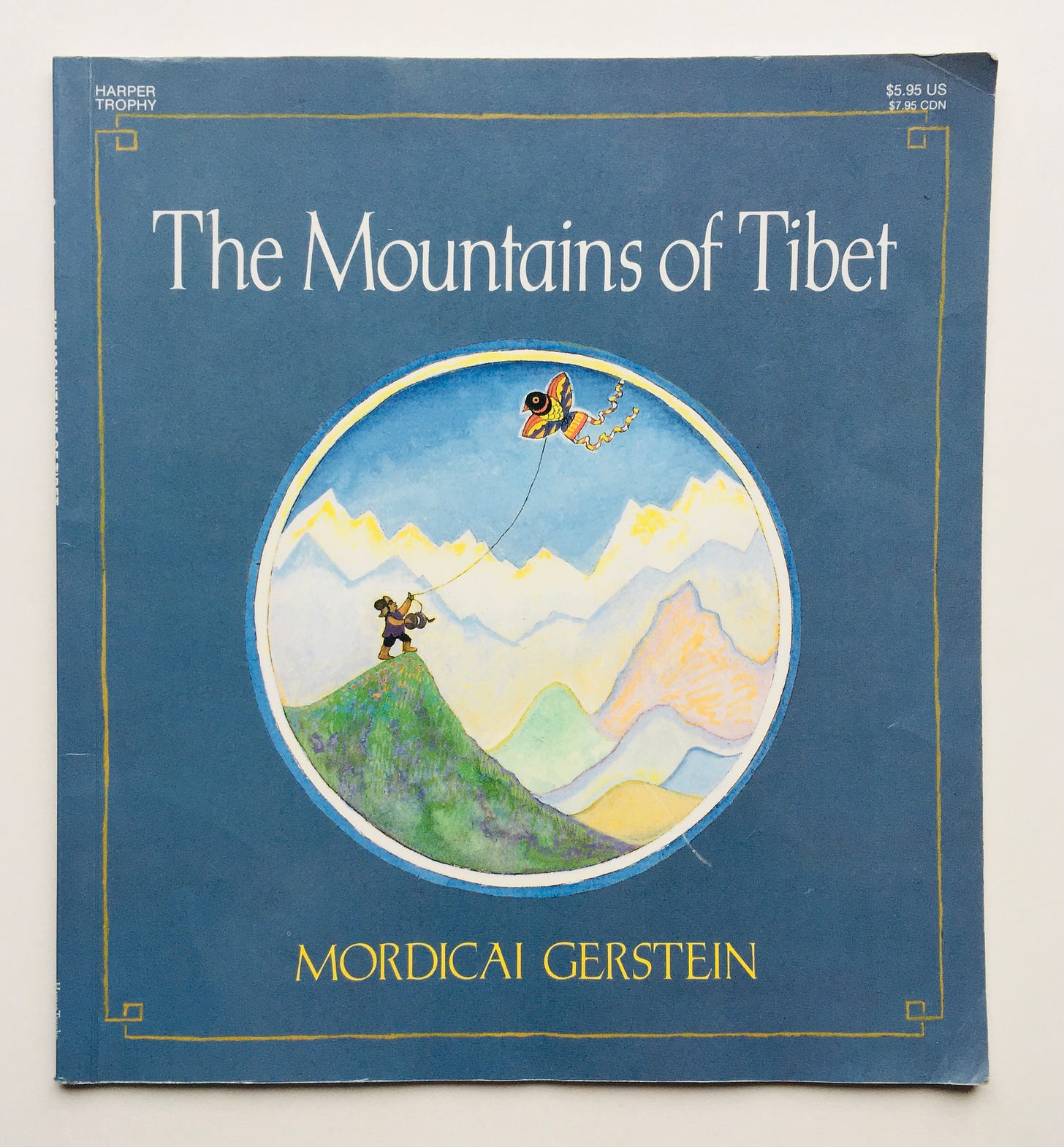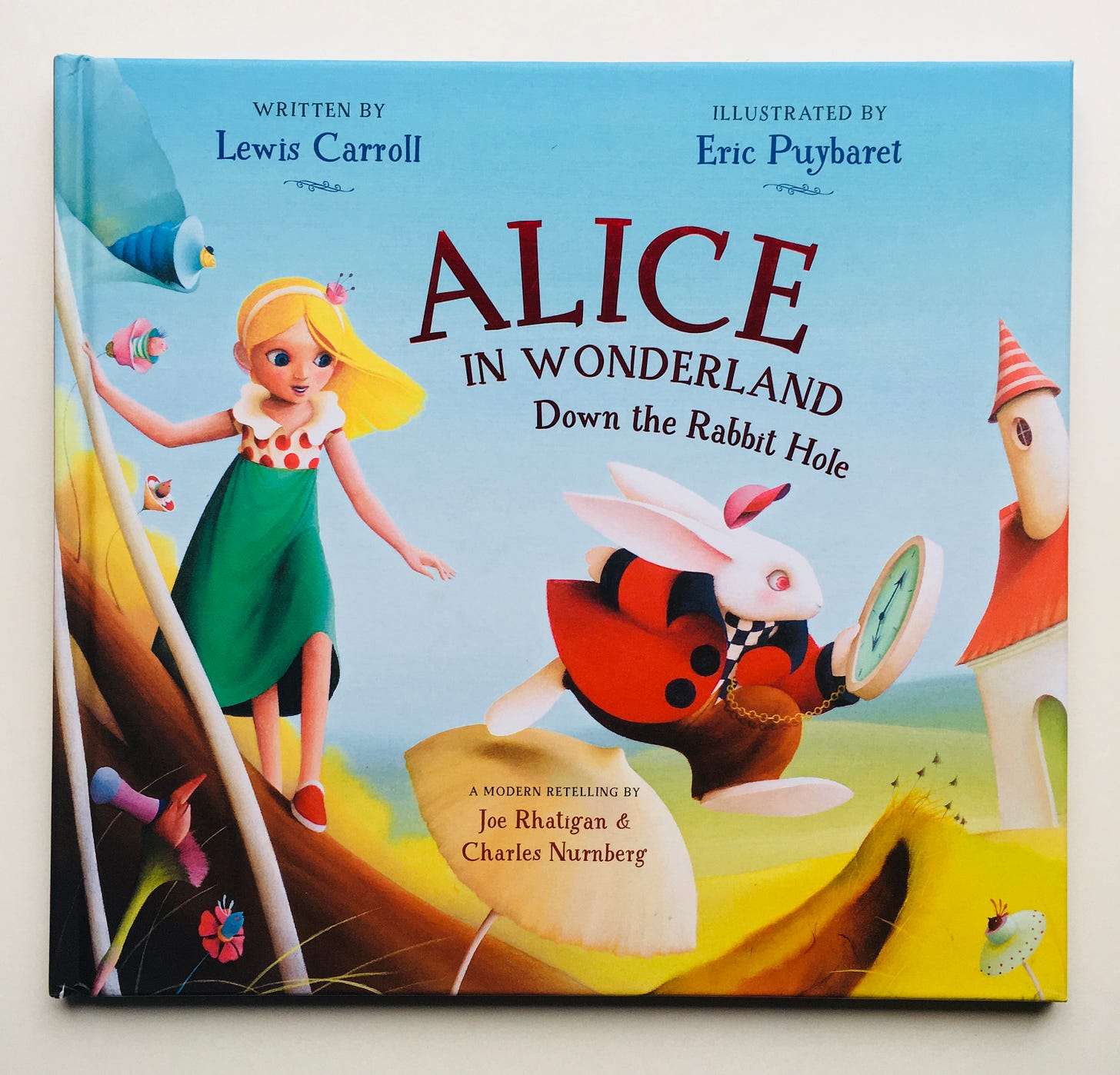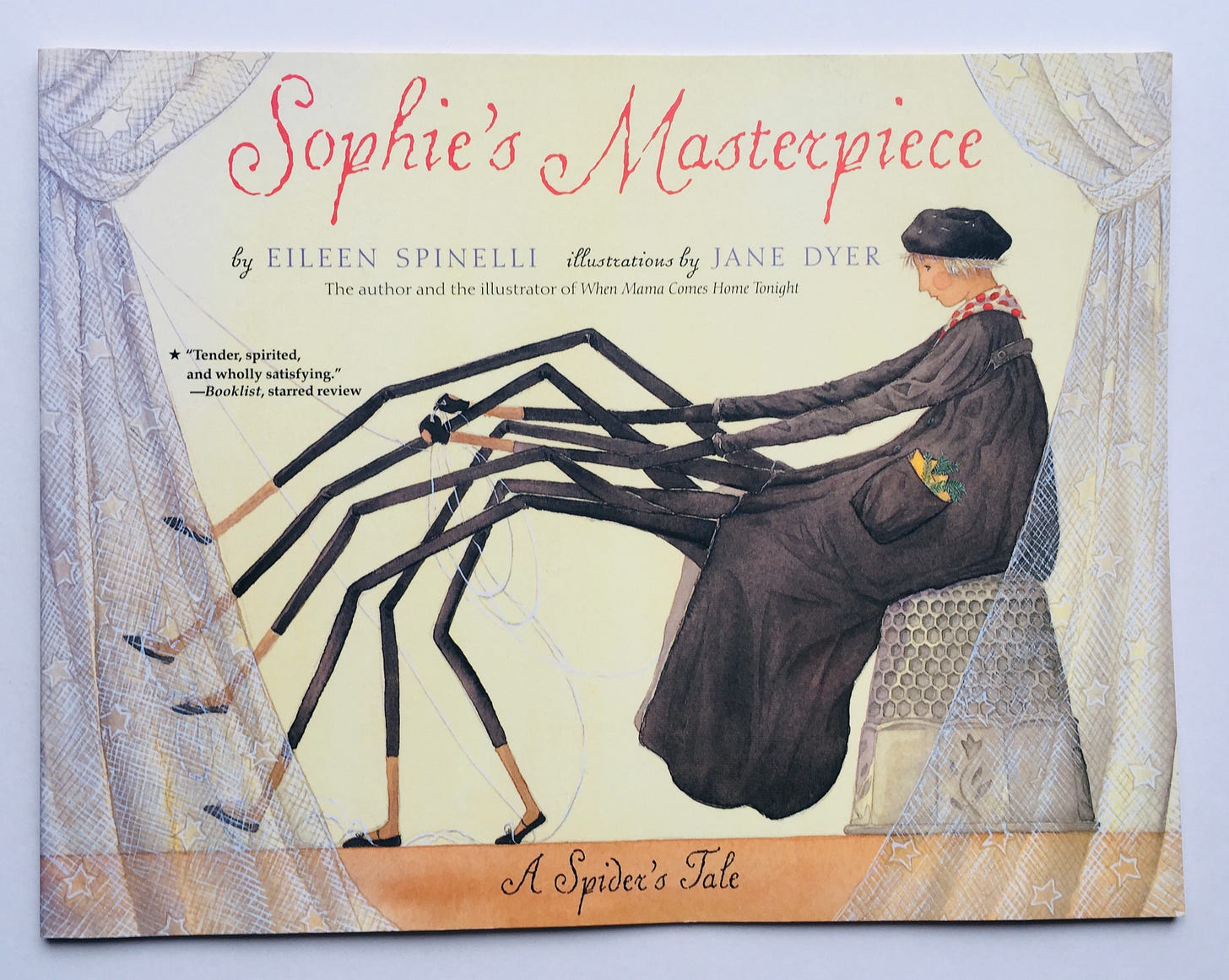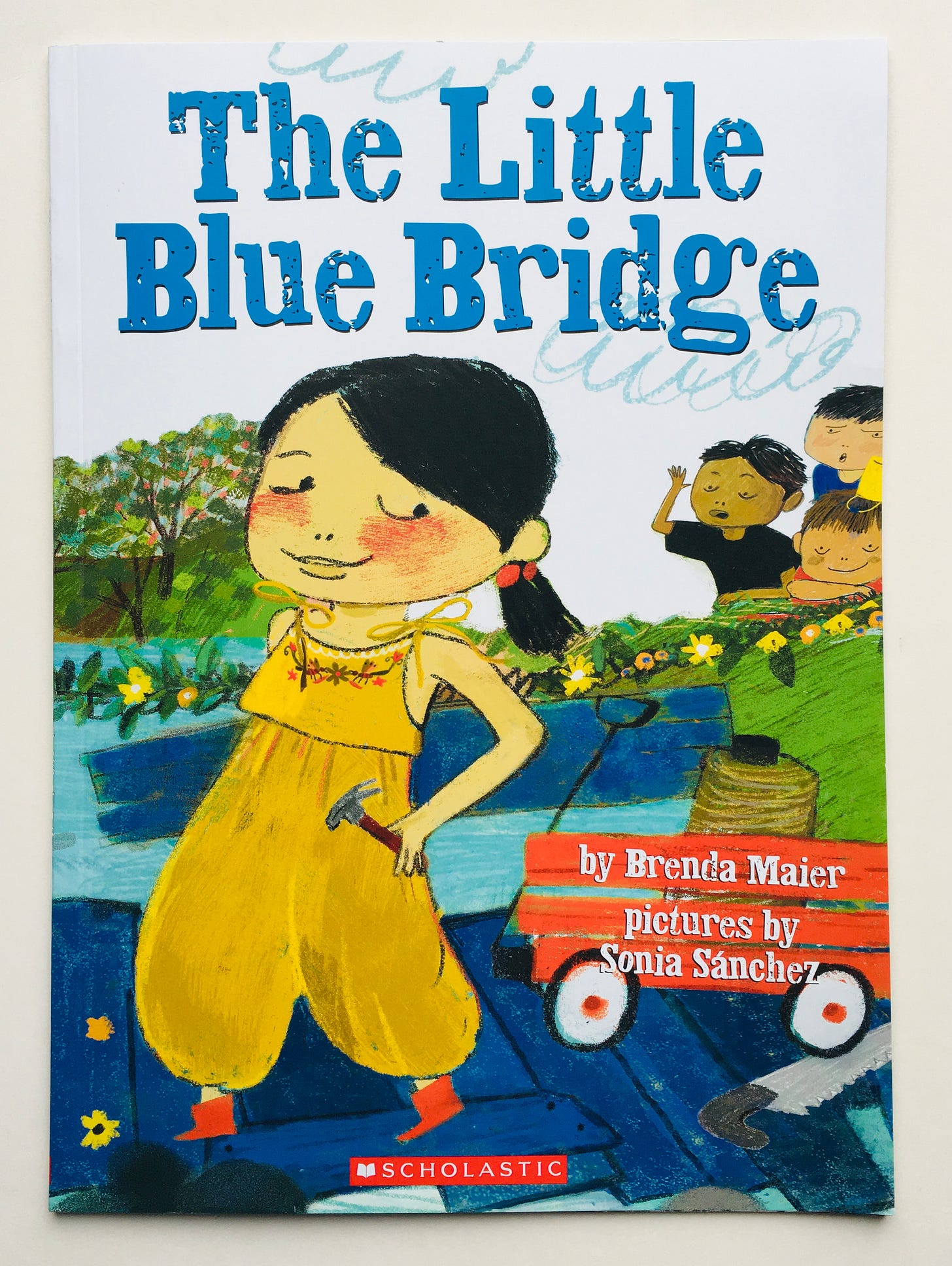Another cycle down the rabbit hole where spiders and pigs and bridges abound
Can we read? No. 60
Good morning! I hope this message finds you well.
My kiddos and my mom and I are Nutcracker-ing tonight — something I missed so much in 2020 I actually wept over it. (Who knew a tradition from my childhood that I’ve continued with my own children meant so much to me? I know the story is super weird, I know the ballet is not for everyone, but damn if the “Waltz of the Snowflakes” doesn’t absolutely mesmerize me, if I don’t get tears in my eyes when, about a third of the way in, the fake snow starts falling and the chorus begins and I feel this wave come over me, such awe and gratitude that I am alive, and able to be here in this very good life. I do not care the tiniest little bit if that makes me basic, or too earnest — being too earnest is a disappearing virtue, if you ask me — because when I look over and my daughters are sitting completely still, open-mouthed, small mirrors of my own body in that moment, I wouldn’t trade a single second.)
I hope whatever you are doing today, it makes you happy (or at least grateful to be alive).
Onwards!
The Mountains of Tibet by Mordicai Gerstein (1987)
I have to admit that I did not expect my kids to take to this story at all, much less like it as much as they do — a story of one man’s life, from birth to death and through reincarnation, doesn’t seem like it would appeal to a 5yo and 7yo, but this was on repeat in our house for weeks when I first brought it home, which just goes to show I know a lot about children’s books but certainly not everything.
If this book sounds simple, I suppose that’s because it is — a little boy lives in tiny village high in the mountains of Tibet. He grows into a man, a woodcutter, and then an old man, looking up at the stars and wondering about the world but never leaving his valley, until one day he dies and a voice tells him, “You now have a choice. You may become part of the endless universe some call heaven, or you may live another life.” He chooses another life, another cycle, because he remembers he wanted to see more of the world, and so it is. He travels through the swirling galaxies of time and space until he comes upon a star around which revolves nine planets. He zooms in and zooms in again, coming closer and closer to his next chosen place, before finally deciding to become a little girl in a tiny village high in the mountains of Tibet.
Gerstein’s fluid pen-and-ink, mixed-media compositions are fascinating, to be sure, and given how existential children are apt to be (perhaps because the veil is thinner for them, or they are not that many years out from having crossed it and are better able to remember and understand), it shouldn’t have surprised me that my children responded to this story that addresses some pretty big questions, like: where do we come from? How did we end up here? And what happens after we die?
These wonderings are a basic part of being human and kids are, after all, the most human among us. Gerstein understands this and wrote a book that speaks to this experience better than any other title I’ve found. It sounds weird, but trust me.
Alice in Wonderland Down the Rabbit Hole, a modern retelling by Charles Nurnber and Joe Rhatigan, illustrated by Eric Puybaret (2015)
My beef with almost all abridgments is not only that they leave out the more sophisticated aspects of a story but that they are unforgivably dumbed down, often at the sacrifice of rich vocabulary but sometimes rich ideas, as well.
Nevertheless, picture book versions of longer, more complex texts don’t always fall on my you-know-what list — there are exceptions to every rule (as well as every Opinion, and I have many of those) and that’s where I land on this “modern retelling” of Lewis Carroll’s classic story about a young girl who falls down a rabbit hole, meets the White Rabbit, and has an adventure that is equal parts puzzling and extraordinary before returning safely home.
This is not your Disney-ified version of Alice — there are some things here that are true to the book but not the movie (which, sadly, I believe most are more familiar with than the wonderful original text) — but nor is it entirely true to Carroll. Noticeably absent is the Queen of Hearts (my favorite character on the page as well as the screen; I mean can you get more fabulous?) but the story is surprisingly flexible, convincing even purists like me that variations on a theme aren’t always a bad thing.
By far the best part of this title is Puybaret’s breathtaking digital illustrations, which are cinematic, dreamy, and downright magical, as if a snow globe and an art school video installation had a baby — odd, visually stunning, and absolutely nothing less than Alice deserves.
Sophie's Masterpiece by Eileen Spinelli, illustrated by Jane Dyer (2001)
You can pretty much guarantee that anytime Eileen Spinelli teams up with Jane Dyer (see also When Mama Comes Home Tonight) you’re going to get a book worth reading, and that’s absolutely true for Sophie’s Masterpiece.
Dyer’s delicate, evocative colored pencil and watercolor illustrations ramp up every tender moment of Spinelli’s equally delicate, evocative story about an artist of a house spider, who spins “webs more wondrous than anyone has ever seen” and is destined to grow up to spin a masterpiece.
One day she moves into a boardinghouse and encounters a landlady who is not friendly to spiders — the tugboat captain boarding there doesn’t appreciate her either, nor does the cook — and many spider years pass this way (a short amount of time, one assumes) until a young woman discovers her and does not swat her away.
Sophie notices the young woman knitting items for a baby, but the expectant mother doesn’t have the money for a baby blanket — and it’s in this moment that Sophie knows what her final masterpiece will be. With the last of her life’s energy and all her heart, she spins a blanket “so soft, so beautiful, as to be fit for a prince” for the new baby and her kind mother.
This tale of tolerance, generosity, and ultimately, self-sacrifice is as gentle and quiet as a softly-spun spiderweb, and just as beautiful. Highly recommend.
Pigs Aplenty, Pigs Galore! by David McPhail (1993)
Those of you who have been here for awhile know my loyalty to David McPhail knows no bounds so if you are tired of hearing about his books, my apologies — I really can’t help it; I’ve never met a McPhail book I didn’t unabashedly love.
McPhail himself, in his charming book, In Flight with David McPhail: A Creative Autobiography, admits to writing about pigs over and over and over again:
Ever since I read Charlotte’s Web by E.B. White, I’ve wanted to own a pig — a live pig. But I never have, even though I’ve lived on farms for a good part of my adult life. Maybe I’ve drawn pigs as a way of making up for not having one.
It’s a lucky thing for small readers of the world (and their grownups) that McPhail’s porcine-owning dream has never come true because his pig books are among his best. Though they aren’t grouped into a clear series, per se, Pigs Aplenty, Pigs Galore has two natural pig-book companions in Those Can-Do Pigs and Pigs Ahoy, all of which feature a large group — a drift or a drove (thank you, collective nouns) — of wild and wily pigs that show up unexpectedly in one man’s life and wreak total havoc:
Late one night
As I sat reading
I thought I heard
The sound of feeding
The pigs eat, of course, they sing, they dress up, they order pizza (and throw it around), and when the man tries to kick them out, they beg to stay, they clean, they wash, they climb into his bed and he finally gets some peace, only to dream about…pigs.
McPhail’s pen and watercolor illustrations are probably why I love his books so much — they are always masterful and often very funny and I cannot get enough, and this book is no exception. The out-of-control nature of the pigs’ antics is hilarious and, as fans of over-the-top behavior themselves, delightful for littles. I highly recommend getting to know — and love — these pigs galore.
The Little Blue Bridge by Brenda Maier (2021)
The minute I saw this title in my 2nd grader’s Scholastic book catalog I knew I had to order it — not only has the excitement of Scholastic book orders not dimmed even a smidgen since I was a 2nd grader myself, we loved Maier’s first book, The Little Red Fort (which I reviewed in issue No. 10) so much it was simply a no-brainer.
Like her previous take on a classic folk tale, here again Maier tackles a well-known tale with a fresh, Latinx twist: this time it’s The Three Billy Goats Gruff, only here we have a heroine, Ruby, who spies some blueberries across a creek and wants to pick them for a pie. Enter her three brothers, Oscar Lee, Rodrigo, and José, who are up for the idea but tell Ruby she is too little to go. She protests but they ignore her and carry on until each of them in turn must face Santiago, a cranky neighborhood bully who tells each of the boys, one at a time à la some familiar goats, “I’m the boss and you can’t cross…unless you give me a snack.”
Each brother implores Santiago to wait for the next brother, but when Ruby tries to cross and receives the same treatment, she’s not having it. She begins to build a bridge, rolling rocks, laying boards, gathering vines, and it so intrigues Santiago that he asks to help. Finally, together, they cross the creek, get some blueberries — and with a little extra work on the part of Oscar Lee, Rodrigo, and José to make amends for their rude behavior toward their little sister, from that day forward, everyone can cross the creek.
As with The Little Red Fort, what I like best here is that Maier makes room for redemption — it’s not as simple as, “You’re a bad troll, we’ll just trick you and leave you to rot under this bridge,” but rather, “Let’s figure this out, let’s repair our relationship and work together.” Along with Sánchez’s colorful, textured digital illustrations this is a fresh and welcome update that brings this traditional teaching tale into a more community-minded, modern era.
(As I’ve said in the past, I urge you not to share variations of folk and fairy tales unless/until your children know the original — the retelling makes far less sense otherwise, so if you need to start with the original story on which this one was based, see my review of The Three Billy Goats Gruff by Thea Kliros and Raina Moore in issue No. 56. Read that one until you know it and then branch out to different versions, like this one.)
That’s all for today! Next week I’ll be sending out a big special edition on winter to all subscribers — because in my opinion the next month is one of the best times of year to dive deep into family reading — so keep an eye out for that in your inbox.
Until then, yours in reading,
Sarah








"being too earnest is a disappearing virtue, if you ask me — because when I look over and my daughters are sitting completely still, open-mouthed, small mirrors of my own body in that moment, I wouldn’t trade a single second." Thank you for this ❤️.
Enjoy the Nutcracker! 🩰 🎄